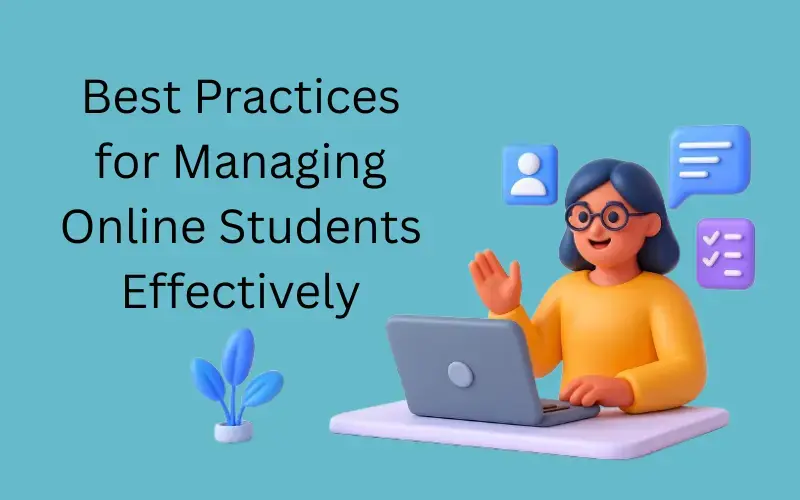
Teaching online isn’t just about sharing knowledge—it’s about managing a learning environment that keeps students engaged, disciplined, and motivated. Unlike traditional classrooms, online students face more distractions, so managing them effectively requires structure, empathy, and the right digital tools.
Here are some tried-and-tested practices that can help educators and institutions make online learning more effective and enjoyable.
1. Set Clear Expectations from Day One
Start your course by explaining how things will work—class timings, submission deadlines, grading policies, and communication rules.
👉 Tip: Share a “student handbook” or a short video outlining your class guidelines. It helps students understand their responsibilities and builds accountability early on.
2. Keep Communication Organized
Managing multiple messages and submissions across emails or chat apps can quickly become chaotic.
👉 Tip: Use a centralized Learning Management System (LMS) where announcements, assignments, and messages are in one place. It minimizes confusion and helps everyone stay updated.
3. Create a Routine and Stick to It
Consistency builds trust. Whether it’s live classes, recorded lessons, or feedback sessions—students learn better when they know what to expect.
👉 Tip: Maintain a fixed schedule and avoid frequent last-minute changes unless absolutely necessary.
4. Balance Flexibility with Discipline
Flexibility is a key advantage of online learning, but too much leniency can lead to missed deadlines.
👉 Tip: Be empathetic but firm. Allow grace periods for genuine reasons but set consequences for repeated delays.
5. Encourage Active Participation
Online learners can easily become passive listeners. Keep them engaged with activities, breakout discussions, polls, and quick feedback rounds.
👉 Tip: Reward participation—recognize top contributors or introduce small incentives for consistent engagement.
6. Monitor Progress and Offer Timely Feedback
Students need to see how they’re doing. Regular progress reports and personalized feedback keep them motivated and on track.
👉 Tip: Automate progress tracking through your LMS to save time and ensure no student is overlooked.
7. Maintain a Personal Connection
Behind every screen is a learner with goals and challenges.
👉 Tip: Schedule one-on-one check-ins, celebrate achievements, and send encouraging notes. It builds trust and reduces dropout rates.
8. Use Data to Improve Your Teaching Strategy
Modern LMS platforms offer insights into attendance, performance, and engagement.
👉 Tip: Review analytics regularly to identify struggling students early and adjust your teaching approach accordingly.
Final Thoughts
Managing online students effectively is a balance of technology, empathy, and consistency. When teachers provide structure and motivation through the right tools, students not only perform better—they enjoy the process.
Digital education is here to stay, and those who manage it efficiently will continue to inspire learning without boundaries.